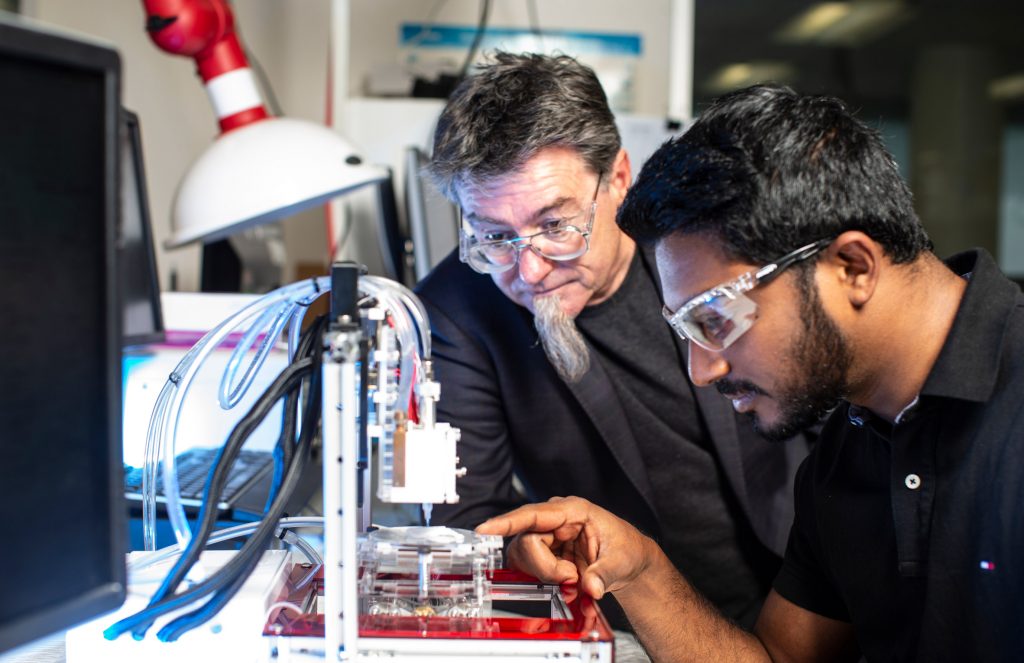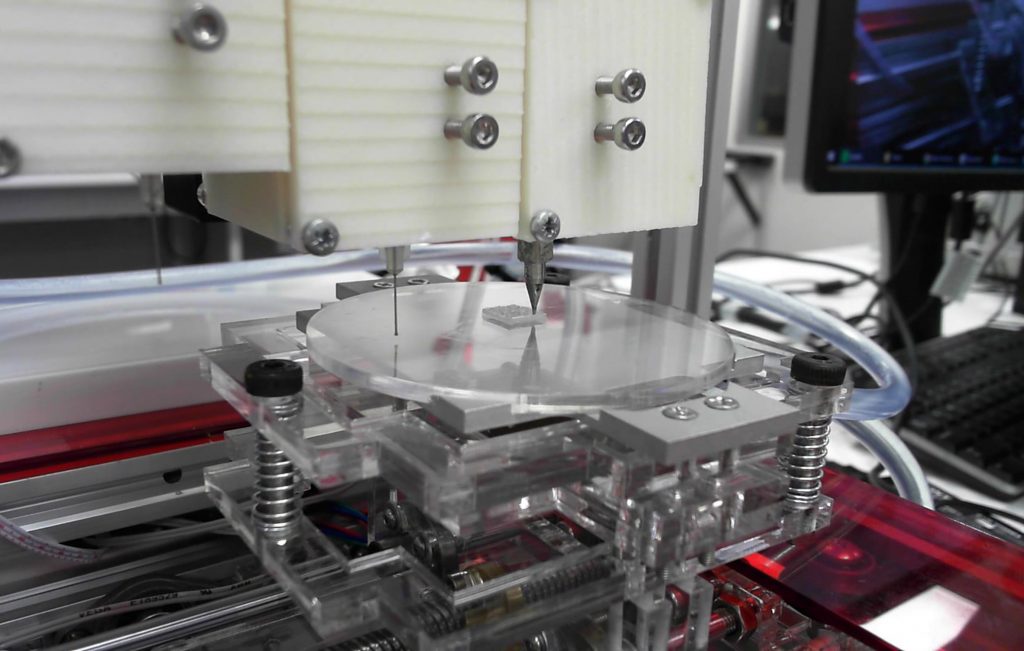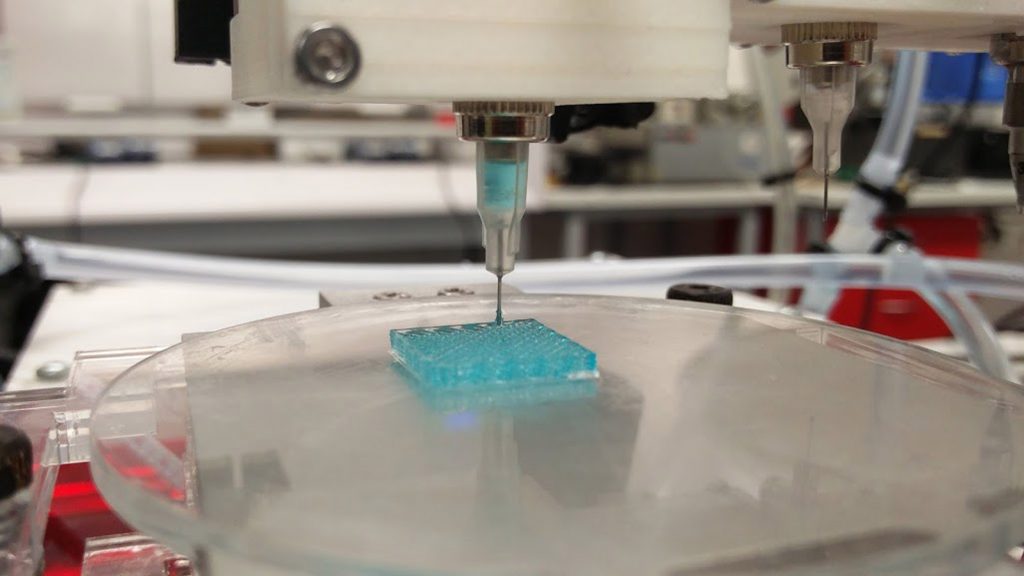There is no doubt that 3D printing offers more and more promise to the medical industry, and that has helped to save and improve lives in many ways.
A team from the University of Wollongong (UOW), Australia, who are working at the ARC Centre of Excellence for Electromaterials Science (ACES) in collaboration with Payal Mukherjee, a nose and throat surgeon, and Associate Professor at the University of Sydney School of Medicine, have developed a 3D bioprinter that replicates human ears. These replicas can be used in a reconstructive surgery. Their 3D bioprinter called “3D Alek”, is a multi-materials 3D printer customized for biofabrication.
Bioprinters use a pipette, which is computer-guided. Instead of using metal or plastic, the pipette layers living cells, which are referred to as “bio-ink”. Bio-ink was developed by researchers at University of Wollongong and the Australian National Fabrication Facility and it uses stem cells to print tissue constructs or organoids for medical research. In the case of 3D Alek, it prints human ear cartilage as to create a “living ear” to treat congenital ear deformities.
This new technology, as researchers say, brings them closer to revolutionizing a complex medical procedure for children with microtia. To understand this congenital condition better: microtia is the deformity of the outer ear where the ear doesn’t develop fully during the first trimester of pregnancy. Mukherjee, claims that this particular ear deformity treatment is demanding: the outer ear 3D shape is extremely complex because of its length, breadth, height, and projection from the skull.
Mukherjee believes that bioprinting is extremely exciting since “it allows an ear graft to be designed and customized according to the patient’s face using their natural tissue”. For her, it would result in a reduced operating time and an improved cosmetic outcome, as well as avoiding the complexity of finding a cartilage donor site.
3D Alek was recently installed at the Royal Prince Alfred Hospital (RPA) in Sydney, and has become the world’s first hospital in New South Wales to have a 3D bioprinter. However, researchers hope to improve their bio-ink for it to match the patient’s anatomy by using the patient’s own stem cells to grow the ear cartilage. The ear abnormality is specific on every patient and it depends on their facial features, thus the idea is to print a customized ear perfect for each patient.
Professor Gordon Wallace, ACES Director, said: “The 3D Alek collaboration had benefited from drawing upon the diverse skills of a range of scientists, engineers and clinicians to bring about real advances to tackle this significant medical challenge.”
For Wallace, the project illustrates their ability to manage a successful pipeline to turn fundamental research into a strategic application to create a new health solution to improve people’s lives.
“We have been responsible for the primary sourcing of materials; the formulation of bio-inks and the design and fabrication of a customized printer; the design of required optimal protocols for cell biology; through to the final clinical application. With one 3D Alek now established in a clinical environment at RPA and a replica in our lab at TRICEP (The Translational Research Initiative for Cell Engineering and Printing) , our new 3D bioprinting initiative, we will be able to fast-track the next stages of our research to deliver a practical solution to solve this clinical challenge,” Wallace added.
Sources: [Dezeen, University of Wollongong, Verdict Medical Devices / Images: Dezeen]
Subscribe to Our Email Newsletter
Stay up-to-date on all the latest news from the 3D printing industry and receive information and offers from third party vendors.
You May Also Like
Gorilla Sports GE’s First 3D Printed Titanium Cast
How do you help a gorilla with a broken arm? Sounds like the start of a bad joke a zookeeper might tell, but it’s an actual dilemma recently faced by...
Nylon 3D Printed Parts Made More Functional with Coatings & Colors
Parts 3D printed from polyamide (PA, Nylon) 12 using powder bed fusion (PBF) are a mainstay in the additive manufacturing (AM) industry. While post-finishing processes have improved the porosity of...
$25M to Back Sintavia’s Largest Expansion of Metal 3D Printing Capacity Since 2019
Sintavia, the digital manufacturing company specializing in mission-critical parts for strategic sectors, announced a $25 million investment to increase its production capacity, the largest expansion to its operations since 2019....
Velo3D Initiates Public Offering in a Bid to Strengthen Financial Foundations and Drive Future Growth
Velo3D (NYSE: VLD) has been among a number of publicly traded 3D printing firms that have attempted to weather the current macroeconomic climate. After posting a challenging financial report for 2023,...



































